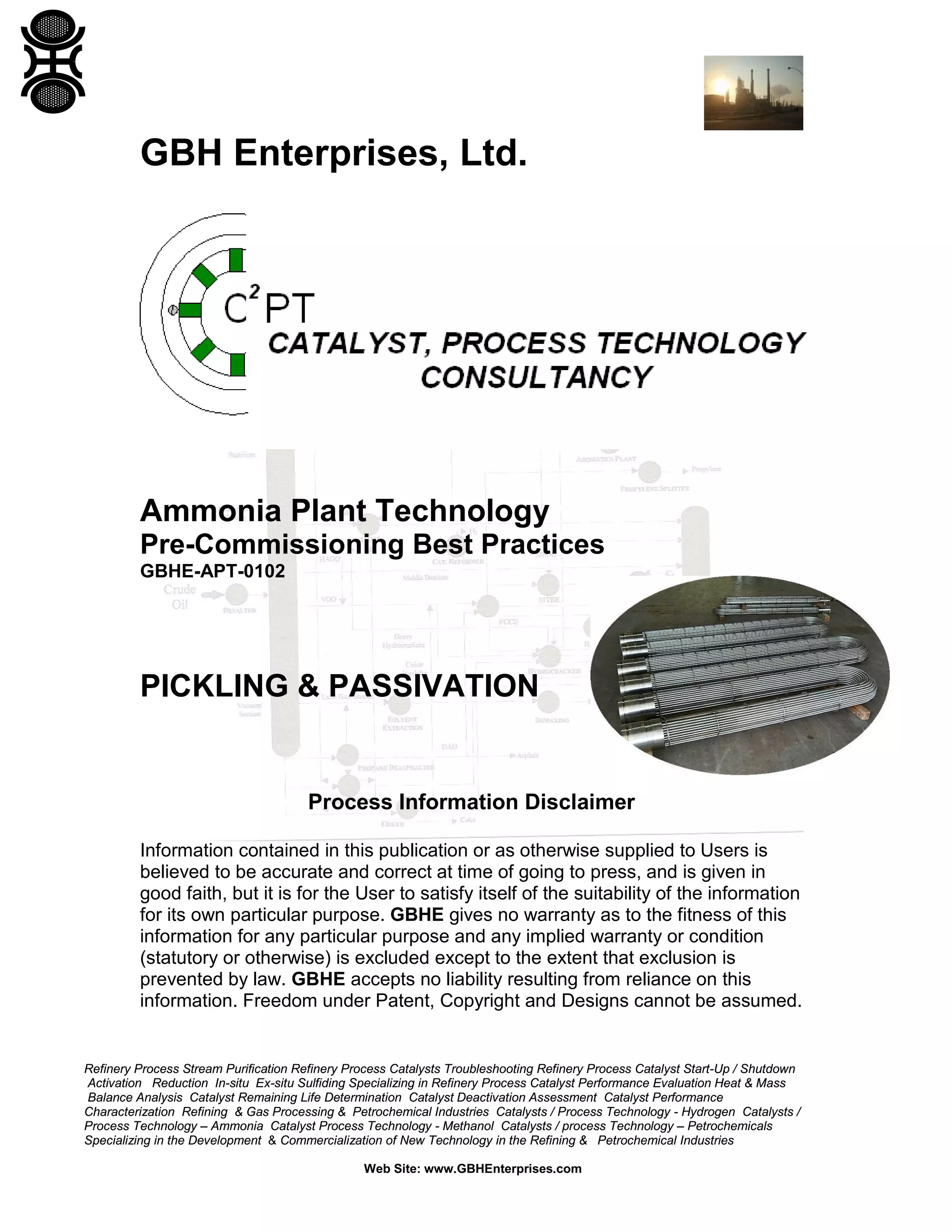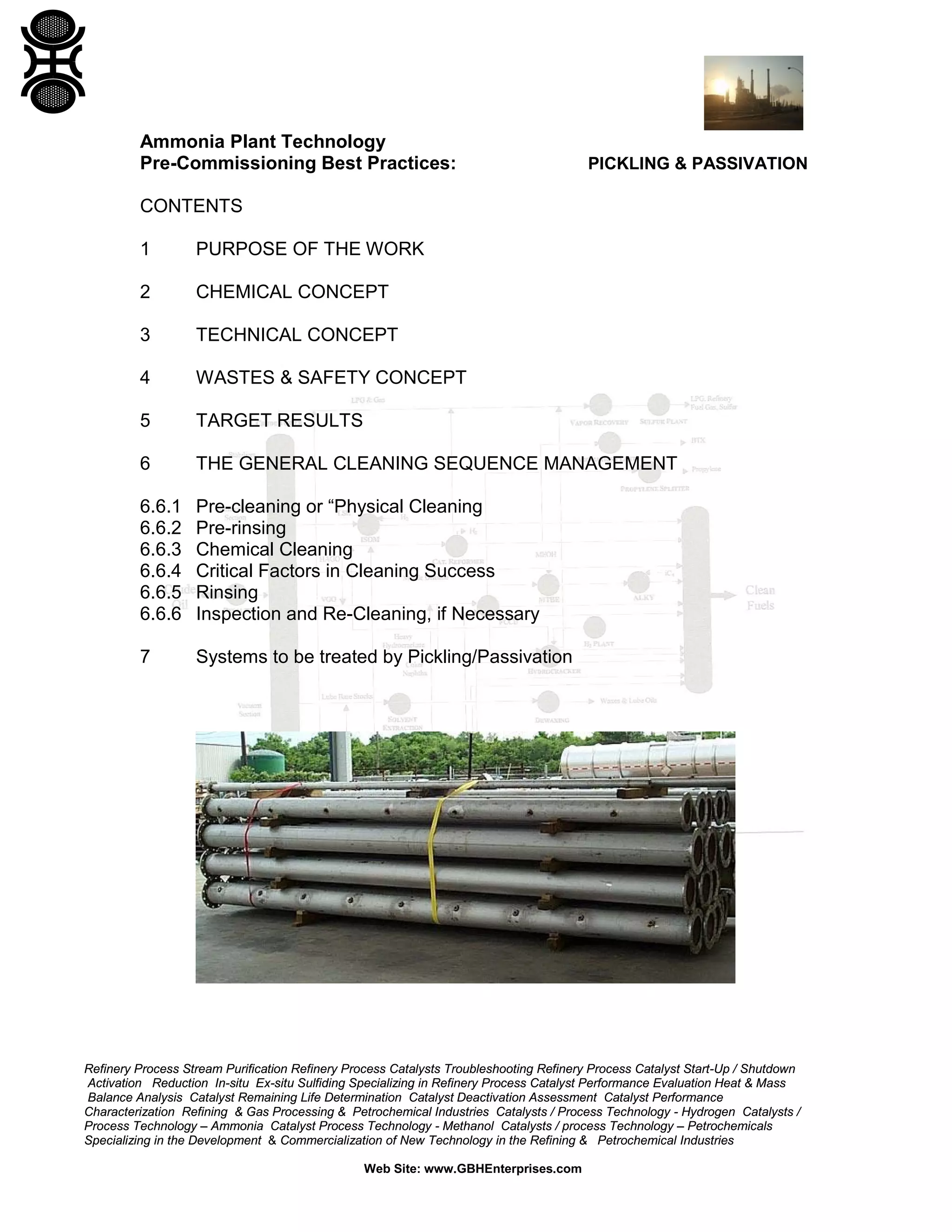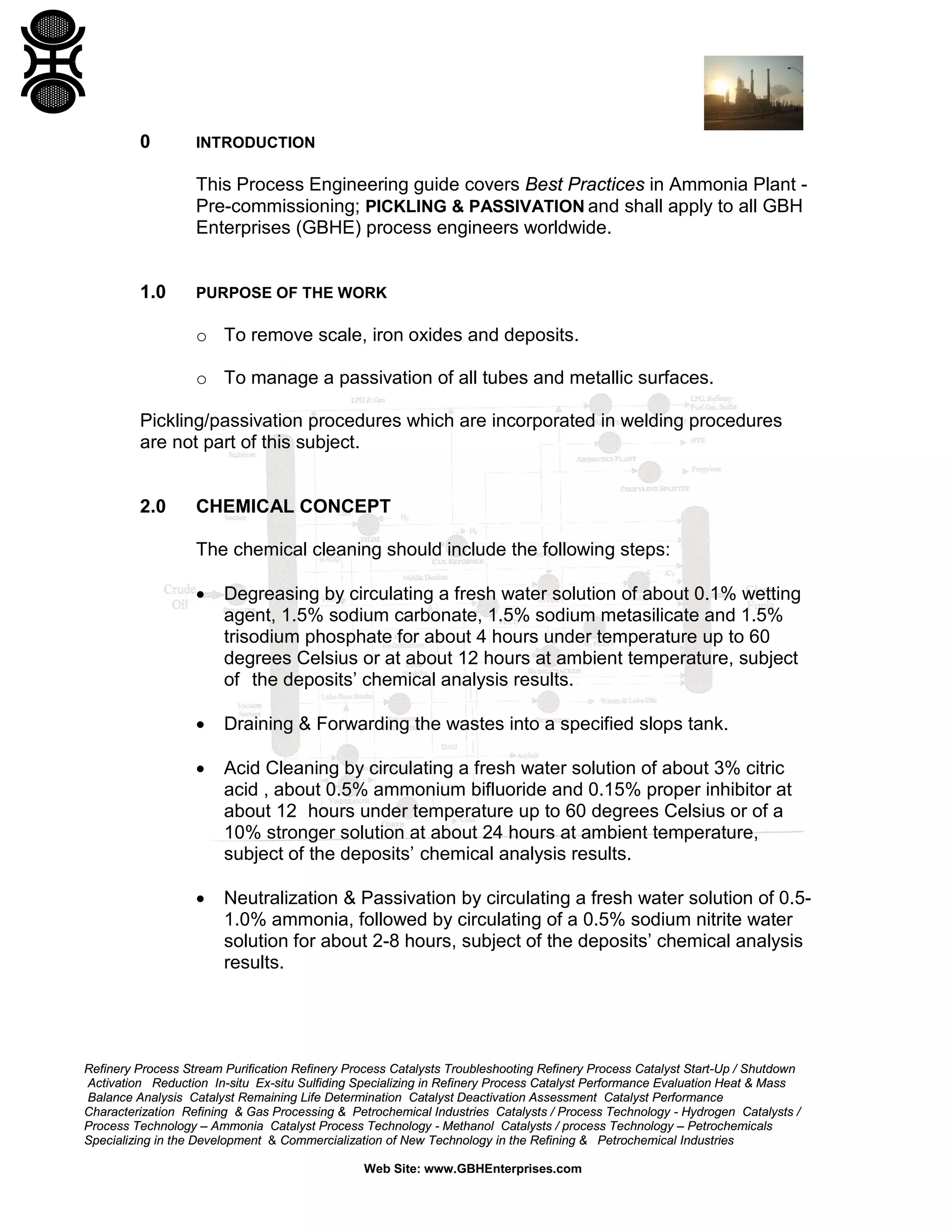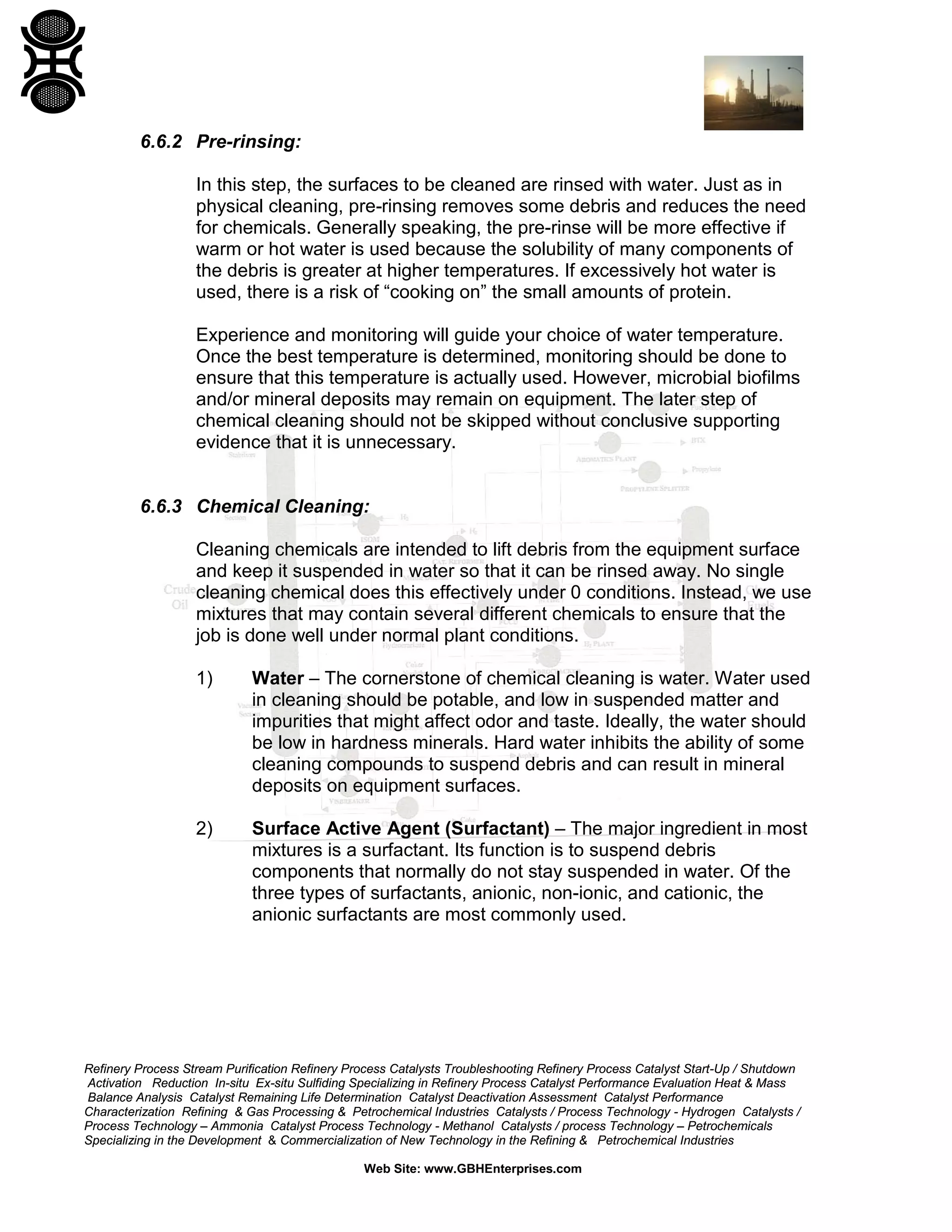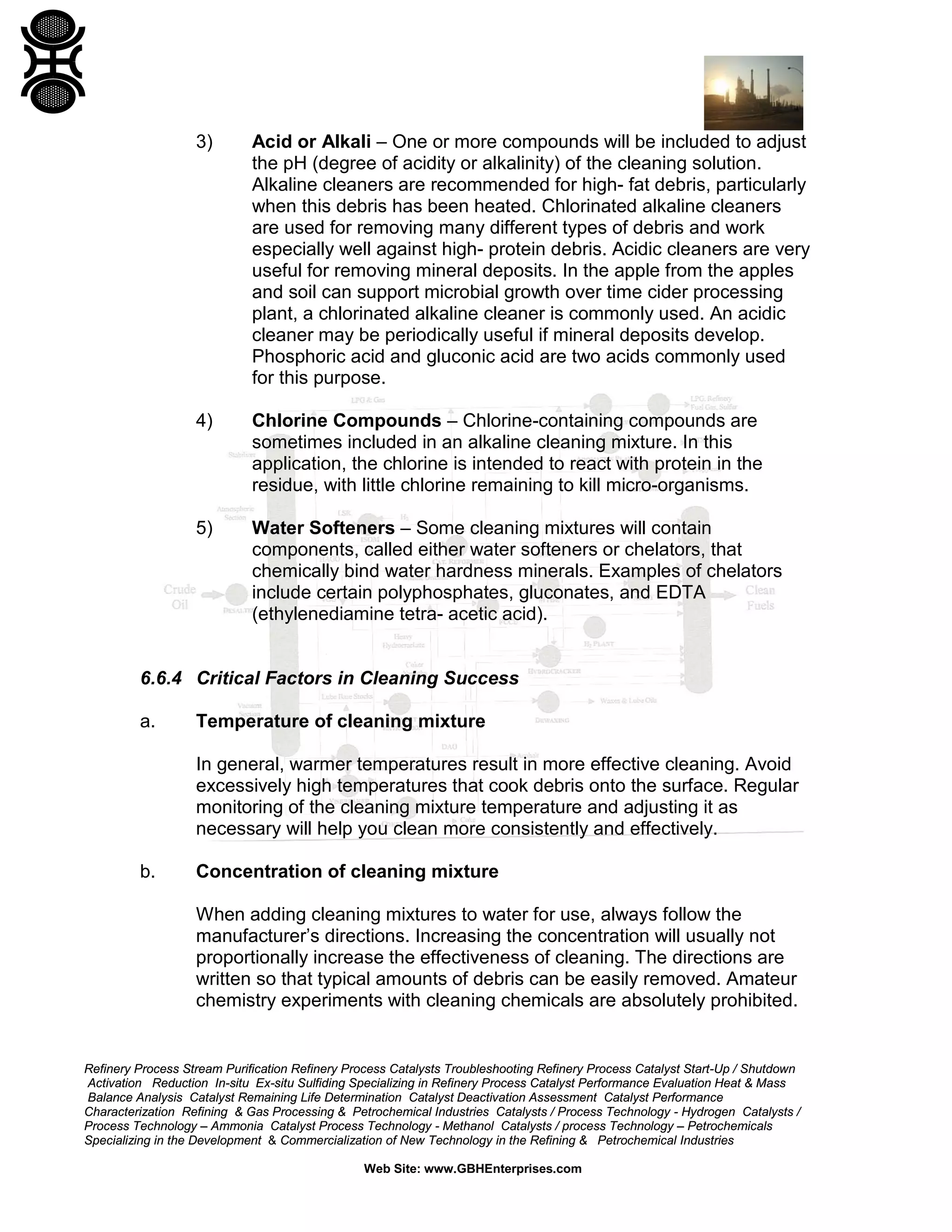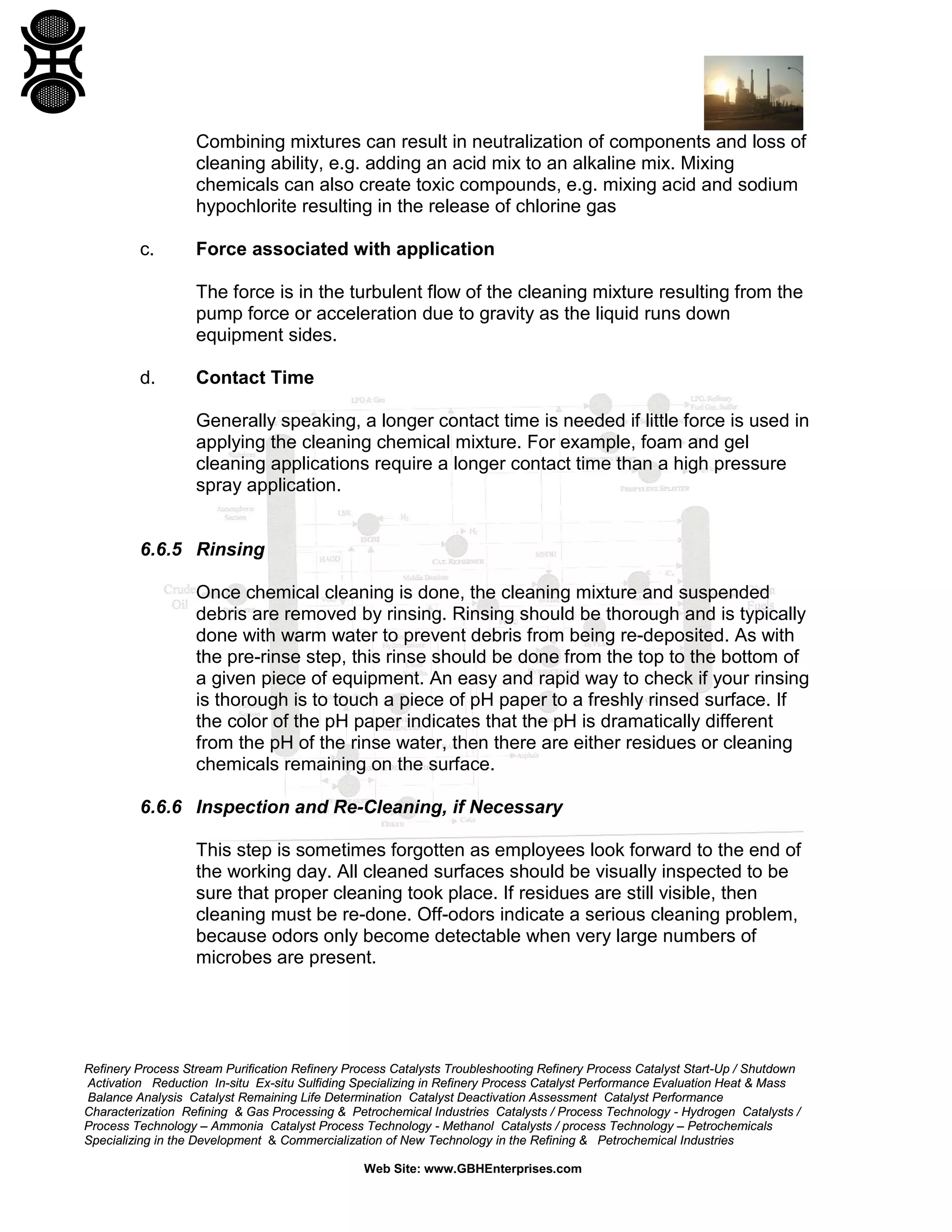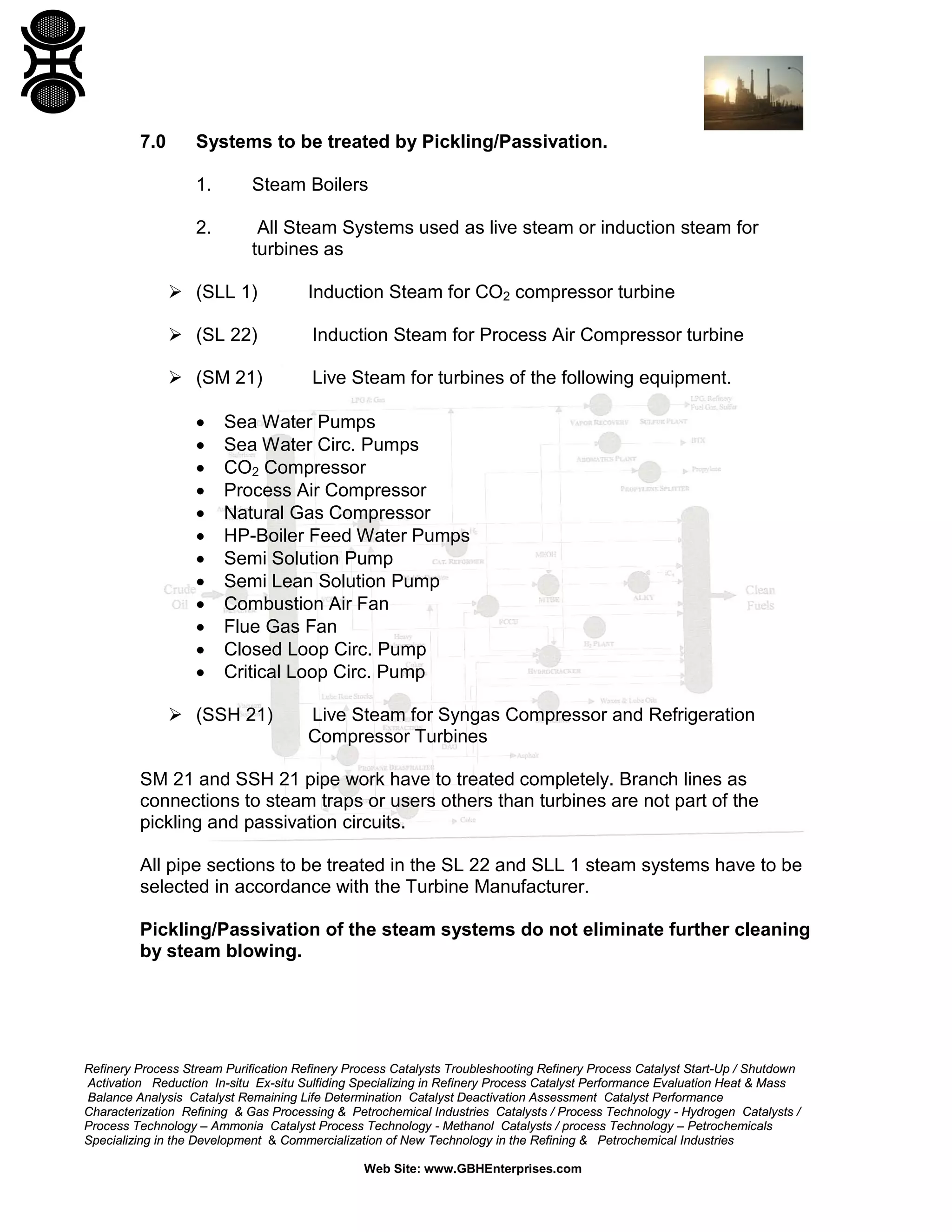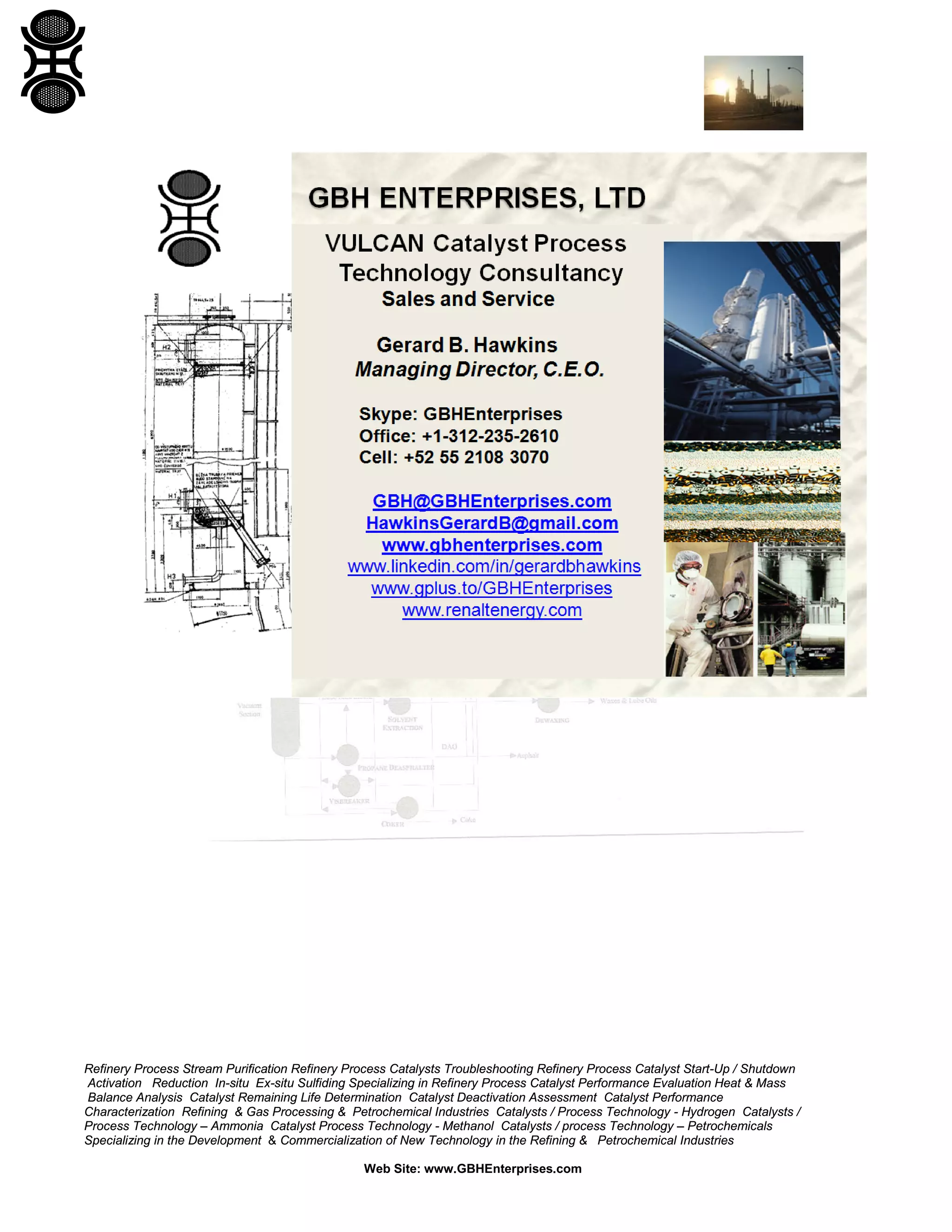This document outlines best practices for pre-commissioning, pickling, and passivation processes in ammonia plant operations, focusing on cleaning techniques for refinery process catalysts and equipment. It includes detailed chemical, technical, and safety concepts necessary for effective cleaning and maintenance in refining and petrochemical industries. The guidelines aim to ensure the successful removal of contaminants while prioritizing the safety and effectiveness of cleaning procedures.
